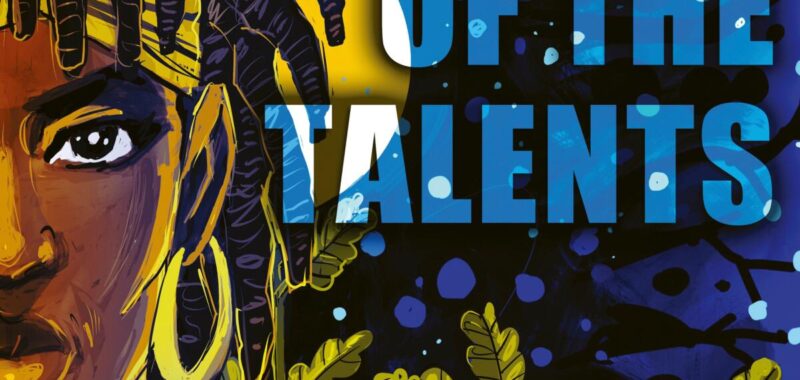Influential writer Octavia Butler’s literary legend may spread to a new type of fanbase with the introduction of a graphic novel adaptation of “Parable of the Talents,” originally published as a novel in 1998 and winner of the 2000 Nebula Award for best novel.
Unveiled last Friday night at Octavia’s Bookshelf bookstore in Pasadena, with illustrator John Jennings in attendance for a Q&A, the adaptation will be released wide on Tuesday by Abrams ComicsArts. Created by Eisner-award winners Damian Duffy and Jennings, alongside artist David Brame, “Talents” is a graphic novel follow-up to their Hugo Award-winning adaptation of Butler’s “Parable of the Sower,” and continues painting a picture of a war-torn United States under the control of a Christian fundamentalist fascist state. While “Sower” follows lead character Lauren Olamina and her Earthseed religion in a dystopian version of the world, “Talents” more closely follows her daughter Asha as she comes to terms with her mother’s legacy.
Butler’s “Parable” novels are hailed for their prescience — they are set in a future (our present) where the major political power runs under the familiar slogan “Make America Great Again” — and could reach a new audience by continuing to publish in this growing medium. Two Butler adaptations, “Sower” and “Kindred,” have already hit stands.
“I think that it’s an important part of our literary landscape and I love the normalization of graphic novels as reading. But it’s an organic push to meet people where they are and to understand that different forms of media helps us retain information. We’re all different,” says Nikki High, owner of Octavia’s Bookshelf.
Influenced by everyone from Steve Ditko to Bill Sienkiewicz to Denys Cowan, and even fine artists and printmakers, Jennings is a professor of media and cultural studies at UC Riverside. At the event, he talked about his process in visually adapting the tome (“I’ll listen to audiobooks of the novel while drawing.”), conversing with his collaborators (“We’d be figuring out what’s the best way to get her vision to this particular medium.”) and what effect creating the adaptations had on him (“It made me a much better researcher.”)
“When you look at the two books, there’s a lot more white space in the second book [“Talent”],” Jennings said. “It feels more like a holographic projection. We’re dealing with the technology of it a little bit more. I’m trying to pull that in. So basically what we did is we took cues from our other collaborator — who was Octavia E. Butler. We’re just trying to take cues from what she’s describing to actually create the feel of the book based off of what we think she would have maybe approved.”
Fans and critics certainly approved. The graphic novels are “highly regarded” on Amazon, and those who have read her work seem to enjoy the same things in the adapted graphic novel that drew them to Butler’s work in the first place.
“Her character development and the different themes in her books sparked [my] interest. I loved ‘Kindred,’ and that was eye-opening for me,” said Jennifer Ayo, a graphic novel and Octavia Butler fan who attended the Q&A session.
“For any others, this could definitely be a gateway into the genre and her different books.”
It may be a daunting task adapting a beloved literary figure, but Jennings and Duffy have had a successful run so far.
“It’s been overwhelmingly positive. I’m sure that some people have issues, but the first book was number one on the New York Times bestsellers list and won the Bram Stoker Award and won the Eisner Award. The second one won the Hugo Award. It seems that people think that we’re doing a pretty decent job.”

